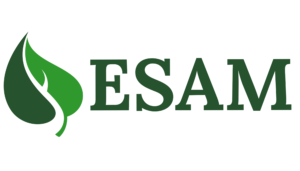Lunch & Learn – SCG Industries
High-Resolution Site Characterization and the Development of a Better Conceptual Site Model: A NAPL Release Site Case Study
18 February 2025
High-Resolution Site Characterization and the Development of a Better Conceptual Site Model: A NAPL Release Site Case Study
18 February 2025
ESAM will be hosting a lunch and learn on Tuesday, February 18, 2025, with Kirklyn Davidson of SCG Remediation Services presenting.
High-Resolution Site Characterization and the Development of a Better Conceptual Site Model: A NAPL Release Site Case Study
Understanding contaminants and their interactions within the environment is crucial to implementing effective remediation strategies. Developing a detailed conceptual site model (CSM) significantly enhances the ability to treat contaminated sites and manage associated risks. High-resolution Site Characterization (HRSC) tools, such as the Membrane Interface Probe (MIP) and Ultraviolet Optical Screening Tool (UVOST), provide valuable insight into the spatial distribution of contaminants. These tools facilitate the creation of more robust CSMs and comprehensive remediation strategies.
SCG Remediation Services has applied HRSC technologies across a number of sectors including military, private sales, mining, and oil and gas. The principles presented in this case study can be used to improve CSMs to allow for a more thorough and accurate evaluation of risk where select NAPL impacts are present.
The purpose of this presentation is to highlight the advantages of HRSC technologies, particularly UVOST, which provides valuable data for assessing and managing risks associated with petroleum hydrocarbon contamination. Traditional investigation methods, such as monitoring wells and boreholes, often fall short of representing NAPL plume structures accurately due to scale limitations. By combining HRSC tools with traditional methods, more refined data on-site stratigraphy, contaminant distribution, transport, and fate can be collected, enhancing the understanding of site dynamics.
UVOST employs laser-induced fluorescence (LIF) for real-time, in-situ field screening of petroleum hydrocarbon-impacted soils. When paired with an electrical conductivity sensor, it provides a comprehensive understanding of contaminant sources and stratigraphy, offering deeper insights into plume dynamics at contaminated sites.
This presentation provides a concise overview of the technology and its application at two NAPL release sites. The integration of HRSC tools with targeted soil and water sampling enhances understanding of NAPL distribution, enabling more informed risk management and effective remediation strategies. These strategies can and have been applied within the oil and gas industry to better inform remedial activities and planning to allow for the development of cost-effective remedial solutions at contaminated sites (abandoned well pads, refineries, pipelines, bulk storage tanks, etc.).

 Registration Open – SAC Business-to-Business Event
Registration Open – SAC Business-to-Business Event